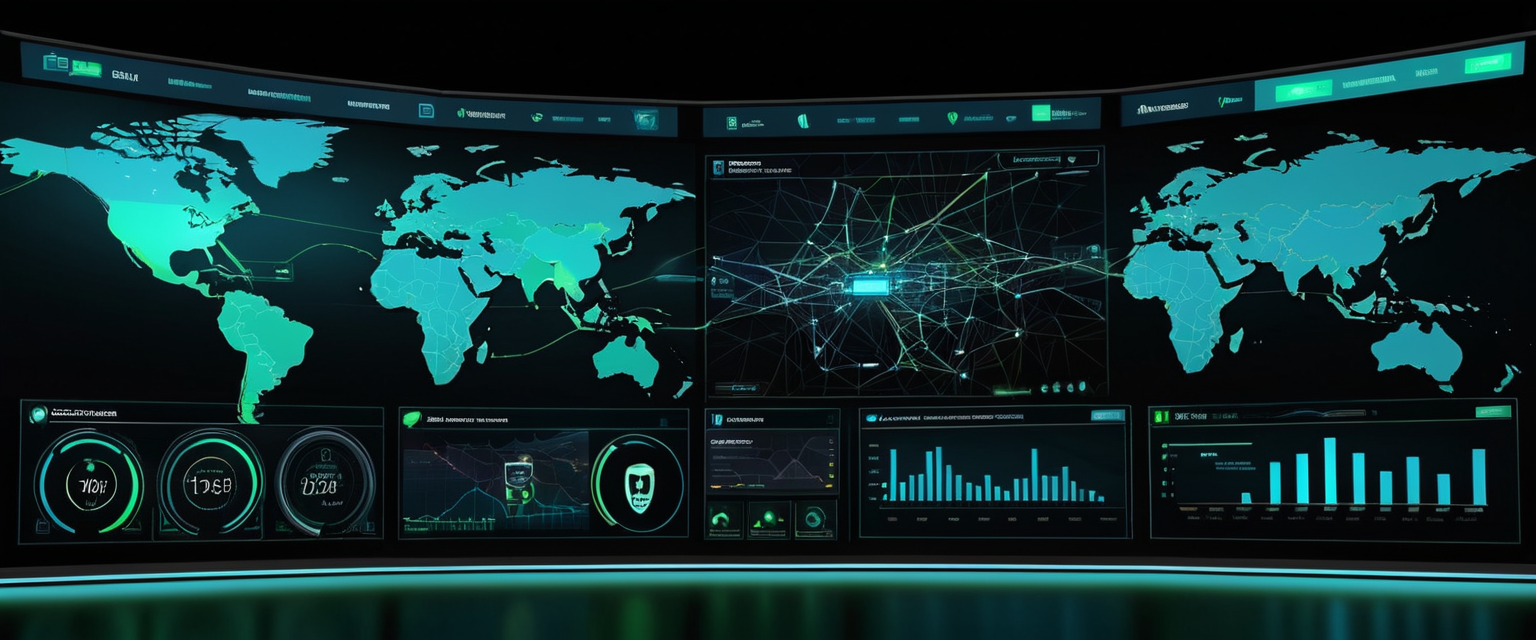
Overview
Determining whether a Virtual Private Network is actively protecting your online activity involves far more than simply observing a connected status in an application. While most VPN applications display visual indicators suggesting an active connection, the actual functionality of VPN technology requires multiple verification methods to confirm that your traffic is genuinely encrypted, your identity properly masked, and your data sufficiently protected through a secure tunnel to a remote server. This comprehensive analysis explores the multifaceted approaches users can employ to verify their VPN status, understand the underlying technical mechanisms that enable VPN connections, diagnose common malfunctions that prevent proper functionality, and recognize the widespread misconceptions that lead individuals to overestimate or underestimate their actual level of online protection. Understanding whether you are truly using a VPN requires knowledge that extends beyond the application interface to encompass DNS request routing, IP address masking, WebRTC leak detection, encryption protocols, and the behavioral patterns that reveal genuine VPN operation versus apparent but ineffective connections.
Verifying Your VPN Connection Status: Initial Steps and Visual Indicators
The Importance of Active Connection Verification
The first and most fundamental step in determining whether you are using a VPN is to verify that your VPN application displays an active connection status. This basic check, while seemingly straightforward, serves as the foundation for all subsequent verification procedures. Most modern VPN applications provide clear visual indicators on their home screens that communicate connection status through color-coded displays, status text, and system notifications. However, the presence of a connection indicator does not necessarily mean that your VPN is functioning optimally or that all traffic is flowing through the encrypted tunnel. Some VPN connections can establish at the application level while failing to properly route all internet traffic through the secure connection, resulting in partial leaks that compromise your privacy. Therefore, while confirming that your VPN app shows a connected status is an essential first step, it must be followed by more rigorous testing procedures to ensure genuine protection.
When examining your VPN connection status, you should also consider whether the application has connected to a specific server location. Most VPN providers allow users to select from numerous server locations across different countries and regions. The ability to see which server you are connected to, along with the connection strength indicator, provides additional confirmation that the VPN is actively routing your traffic through that particular endpoint. Many premium VPN services display real-time statistics including the current connection duration, data transferred through the VPN, and the specific protocol being used to establish the connection. These detailed metrics confirm not only that a connection exists but also that the VPN client is actively managing the secure tunnel.
System-Level Connection Confirmation
Beyond the VPN application itself, modern operating systems provide their own indicators of active VPN connections. On iOS devices, a VPN status icon appears in the Control Center when a connection is established, allowing users to quickly confirm that their device is VPN-protected at the operating system level. Similarly, Windows 11 is receiving a new VPN status indicator in the taskbar system tray that displays a small shield icon overlaid on the network icon when a VPN connection is active. These system-level indicators serve as an independent verification method that complements the VPN application’s own status display. Mac users can verify their VPN connection status through the Network preferences panel and system notifications that appear when connections are established or terminated. Android users typically see a persistent notification in their notification drawer indicating an active VPN connection, providing constant awareness of their VPN status.
The advantage of relying on system-level indicators is that they represent an independent verification that the VPN protocol is functioning at the operating system level, not merely within the application environment. If your VPN application claims to be connected but your operating system shows no active VPN connection, this discrepancy indicates a serious malfunction that requires immediate investigation. Conversely, if both your VPN application and your operating system confirm an active connection, this provides greater confidence that the VPN tunnel has been successfully established and should be routing your traffic appropriately.
Comprehensive Testing Methods: Ensuring Genuine VPN Functionality
IP Address Verification: The Foundation of VPN Testing
The most straightforward and widely recognized method for confirming that a VPN is working involves comparing your visible IP address before and after connecting to the VPN service. Every device connected to the internet receives a unique Internet Protocol address that websites and online services can use to identify your location and potentially track your online activity. When functioning correctly, a VPN masks this real IP address by routing all your internet traffic through a VPN server, which presents its own IP address to websites instead of your actual address. Testing this function involves several straightforward steps that can be completed in just a few minutes.
The IP address verification process begins by disconnecting your VPN entirely and visiting a website that displays your current IP address. Free tools such as whatismyipaddress.com or ipleak.net will display your real IP address along with your approximate geographic location based on that address. Users should take careful note of this information—the actual IP address, the displayed location, and the identified internet service provider. The next step involves connecting to the VPN and selecting a server location in a specific country or region that is geographically distant from your actual location. After the VPN connection has been established, users should return to the same IP checking website and refresh the page to see their new IP address. If the VPN is functioning properly, the displayed IP address should differ significantly from your real IP address, and the geographic location should correspond to the VPN server location you selected rather than your actual physical location.
This IP address test provides concrete evidence that your traffic is being routed through the VPN server rather than directly to websites through your internet service provider. The change in displayed IP address and geographic location indicates that websites will see you as originating from the VPN server’s location rather than from your true location. However, researchers and security professionals emphasize that this test alone does not guarantee complete privacy, as additional methods exist for websites to determine your true location, and other data leaks can occur even when the IP address has been successfully masked. Therefore, while the IP address verification is an essential first test, it should be considered a necessary but insufficient indicator of true VPN functionality.
DNS Leak Testing: Uncovering Hidden Traffic Routes
The Domain Name System (DNS) represents one of the most critical components of internet infrastructure, yet it is also one of the most common sources of privacy leaks when users employ VPN technology. The Domain Name System functions as the internet’s address book, translating human-readable website names into numeric IP addresses that computers use to locate and connect to websites. When you type a website address into your browser, your device must send a DNS request to a DNS server asking for the IP address associated with that domain name. The problem with DNS requests in the context of VPN usage is that these requests often bypass the VPN encryption tunnel by default, allowing your internet service provider or other third parties to observe which websites you are attempting to access, even though they cannot see the specific pages you view within those sites.
A DNS leak occurs when a VPN fails to properly tunnel DNS requests through its encrypted connection, instead allowing these requests to be processed by your internet service provider’s DNS servers or other default DNS resolvers. The consequences of a DNS leak are significant, as it means your internet service provider can maintain a complete record of the websites you visit, defeating one of the primary purposes of using a VPN in the first place. To test for DNS leaks, users should visit websites specifically designed to detect this vulnerability, such as DNSLeakTest.com. These testing websites work by querying DNS records in a manner that reveals which DNS servers are handling your requests. If your DNS requests are truly flowing through the VPN’s encrypted tunnel, the test results will display DNS servers belonging to your VPN provider rather than your internet service provider’s DNS servers.
The DNS leak testing process is straightforward and requires no technical expertise. After disconnecting from your VPN, users should visit a DNS leak test website and note which DNS servers are identified in the test results. These will typically be the DNS servers associated with the user’s internet service provider. Next, the user should connect to the VPN and return to the same DNS testing website, refreshing the page to run the test again. If the VPN is properly configured, the test results should now display DNS servers belonging to the VPN provider rather than the user’s ISP. The results should show an entirely different set of DNS servers, indicating that DNS requests are now being routed through the VPN’s secure tunnel. Some DNS leak tests offer both standard tests and extended tests, with the extended version checking for additional types of DNS leaks that might occur through IPv6 addresses or other mechanisms.
WebRTC Leak Detection: Preventing Browser-Based IP Exposure
WebRTC, which stands for Web Real-Time Communication, is a browser technology that enables direct peer-to-peer communication between devices for services such as video conferencing, audio calls, and real-time data sharing. While WebRTC provides valuable functionality for modern web applications, it also represents a significant privacy vulnerability for VPN users. The fundamental issue with WebRTC is that in order for two devices to communicate directly, they must exchange information about their actual IP addresses. If a website uses WebRTC technology and your VPN does not properly prevent WebRTC from accessing your real IP address, the website can discover your actual location even while you are connected to a VPN that has successfully masked your IP address through all other traffic routes.
Testing for WebRTC leaks involves visiting a specialized testing website designed to detect whether your real IP address is visible through WebRTC channels. Multiple free WebRTC leak testing tools exist online, including those hosted by Surfshark, ExpressVPN, and independent security researchers. The testing process mirrors the DNS leak test methodology: first, the user disconnects from their VPN and visits the WebRTC leak test website to document their real IP address and any other IP information revealed by the test. Next, the user connects to their VPN and returns to the same WebRTC testing website to determine whether any real IP addresses are still visible. A properly functioning VPN should prevent any real IP addresses from being exposed through WebRTC, displaying only the VPN server’s IP address.
The significant risk posed by WebRTC leaks is that they are not universally understood by casual VPN users, yet they can completely undermine the privacy protection that users believe they have achieved. Some users may successfully mask their IP address and ensure their DNS requests flow through the VPN, yet still suffer from WebRTC leaks that expose their actual location to websites they visit. It is particularly important to note that WebRTC functionality varies across browsers, with Safari providing better built-in protection against WebRTC leaks than Chrome, Firefox, or Opera. Users who are particularly concerned about WebRTC leaks can disable WebRTC entirely in their browser settings or install browser extensions specifically designed to block WebRTC requests, though this may disable video conferencing and other real-time communication features on websites that depend on this technology.
VPN Speed Testing: Assessing Connection Performance
While not directly indicative of whether a VPN is working, speed testing provides important information about the quality and viability of your VPN connection. Some degree of speed reduction is inevitable when using a VPN, as your traffic must be encrypted and routed through an additional server before reaching its final destination. However, the amount of speed reduction varies significantly depending on multiple factors including the distance between your location and the VPN server, the number of users currently connected to that server, the encryption protocols and cipher strength being used, and the inherent speed capabilities of your internet service provider connection.
Speed testing is conducted by using free online tools such as speedtest.net or fast.com to measure download speeds, upload speeds, and latency both before connecting to a VPN and while connected to various VPN servers. A general baseline is that good VPN performance should result in no more than a 10-30 percent reduction in speed compared to your baseline connection, while acceptable performance might involve 30-50 percent reduction. If your VPN connection results in more than a 50 percent speed reduction, this suggests either that you are connecting to an overloaded server or that there is a more fundamental issue with your VPN configuration that warrants investigation. Users experiencing significant slowdowns can improve performance by connecting to servers geographically closer to their actual location, experimenting with different VPN protocols, or switching to less congested servers if their VPN provider offers server load information.

Platform-Specific VPN Status Monitoring and Indicators
Windows VPN Status Integration
Microsoft Windows devices offer multiple methods for users to verify their VPN connection status. Windows 11 is currently implementing a new VPN status indicator in the system tray that displays a small shield icon overlaid on the network icon when a VPN connection is active. This feature, which emerged in Windows Insider Dev builds, provides users with a persistent visual indicator of their VPN status without requiring them to open the VPN application or navigate to settings pages. However, it is important to note that this indicator currently only works with VPN connections configured through Windows’s built-in VPN client and does not display for commercial VPN applications such as NordVPN or ProtonVPN that use their own client software.
Beyond the system tray indicator, Windows users can access detailed information about their VPN connections through the Network Settings panel. By navigating to Settings > Network & Internet > VPN, users can view a list of configured VPN connections, their current status (connected or disconnected), and options to manually connect or disconnect. This interface provides more detailed information than the system tray icon, allowing users to see multiple VPN configurations and manage them individually. Windows also records VPN connection logs that can be accessed through the Event Viewer application, providing a historical record of when VPN connections were established and terminated. For advanced users, PowerShell commands can retrieve detailed connection information including ingress and egress bytes transferred, connection status, and connection establishment timestamps.
macOS VPN Status Management
Apple’s macOS operating system integrates VPN support through the Network preferences panel accessible via System Settings. Mac users can add VPN configurations through this interface and monitor their connection status directly from the settings application. Additionally, macOS provides a VPN status icon in the menu bar that displays the current connection status when a VPN connection is active. Mac users can click this icon to quickly connect or disconnect from their configured VPN without launching the full VPN application interface. The Apple ecosystem integration means that when you connect to a VPN on a Mac, the status is reflected consistently across settings pages and system notifications.
For Mac users employing third-party VPN applications, status monitoring typically occurs within the application interface itself, as these commercial VPN clients operate independently from the system’s native VPN support. However, experienced Mac users can verify VPN status by examining network adapter information and checking the active network routes on their system. The Network Utility application (included with macOS) allows users to view detailed information about their network configuration, including active network interfaces and their associated IP addresses and routing information. For users seeking more granular control and verification, command-line tools such as ifconfig and netstat provide detailed information about active network connections and routing tables.
iOS VPN Status Display and Accessibility
iOS devices integrate VPN support directly into the operating system, displaying VPN status through the Control Center interface accessible by swiping down from the top-right corner of the device screen. When a VPN connection is active, a VPN status icon appears prominently in the Control Center, allowing users to quickly verify their VPN status at any moment. Additionally, iOS may display a VPN indicator in the status bar at the top of the screen, providing constant awareness of active VPN connections. Users can tap the VPN status icon in the Control Center to quickly disconnect from their current VPN if desired.
One important consideration for iOS users is that the built-in VPN status indicator only works with VPN configurations added through the native iOS VPN interface. Commercial VPN applications such as Norton Secure VPN operate independently and may not display system-level status indicators, instead relying on in-app status displays. When using commercial VPN applications on iOS, users should open the app to verify their connection status, as the system-level indicators may not accurately reflect connections established through third-party VPN clients. This distinction is particularly important for users who switch between multiple devices or who are accustomed to system-level VPN status indicators and may miss application-specific status displays.
Android VPN Status Indicators
Android devices display active VPN connections through a persistent notification that appears in the notification drawer when a VPN connection is established. This notification remains visible at all times while the VPN is connected, providing users with constant awareness of their VPN status. The notification can be accessed by swiping down from the top of the screen to open the notification drawer, where it will display information about the active VPN connection. Tapping on the notification typically opens the VPN application for more detailed status information.
Android’s implementation of VPN status notifications is particularly robust because the operating system requires all VPN applications to display a persistent notification indicating an active connection. This ensures that users cannot accidentally use their Android device with a VPN connection they are unaware of, as the persistent notification makes VPN status impossible to miss. Additionally, Android allows users to grant or deny VPN permissions to applications, providing an additional layer of control over which applications can establish VPN connections on their device.
Common Issues and Misconceptions Affecting VPN Usage Verification
The Anonymity Misconception
One of the most pervasive and consequential misconceptions about VPN technology is the assumption that simply using a VPN automatically renders a user anonymous online. This fundamental misunderstanding leads many users to overestimate the protection they receive from VPN technology and to neglect additional privacy measures that might be necessary for their specific security requirements. While a VPN does encrypt your internet traffic and mask your IP address from your internet service provider, it does not make you truly anonymous online in any comprehensive sense. Websites can still identify and track you through multiple alternative mechanisms including browser cookies, cached files, geolocation features, browser fingerprinting techniques, and account logins that link your activity to your identity.
The anonymity misconception becomes particularly problematic when users rely exclusively on VPN protection for activities where genuine anonymity would be critical, such as whistleblowing or evading government surveillance in authoritarian regimes. In these contexts, a VPN alone provides insufficient protection, and users would need to combine VPN technology with additional privacy tools such as Tor browser, anonymous email services, and careful operational security practices. It is also important to recognize that VPN providers themselves can potentially observe user activity, creating a trust requirement that many users do not adequately evaluate. The strength of VPN privacy protection ultimately depends not only on the technical capabilities of the VPN but also on the logging policies and trustworthiness of the VPN provider.
Overestimating IP Address Protection
Another common misconception involves users who successfully verify that their IP address has changed while using a VPN and who then assume that all aspects of their identity and location are hidden. However, multiple additional mechanisms exist through which websites can determine your true location even after you have successfully masked your IP address. Geolocation APIs available to web browsers can access device location information derived from GPS, cellular triangulation, and WiFi network databases without requiring access to your IP address. Mobile applications can access similar location information through the device’s native location services. These location data sources operate entirely independently from IP address information and cannot be masked by a VPN unless users explicitly disable location permissions for specific applications.
Additionally, websites can analyze DNS requests, cookies, and browser fingerprinting data to make educated guesses about your true location regardless of your VPN IP address. When these various data points create a location conflict—for example, when your VPN IP address suggests you are in the United Kingdom while your cookies, geolocation, or browser fingerprints suggest you are actually in the United States—websites may correctly infer that you are using a VPN and may take action such as blocking your access or requiring additional verification. Users who understand these additional location-tracking mechanisms can take appropriate countermeasures, such as disabling location permissions, clearing cookies, and using VPN provider browser extensions specifically designed to spoof geolocation data.
Misunderstanding Encryption Scope
Many casual VPN users assume that a VPN connection provides complete encryption for all their internet activity, failing to recognize that certain activities and protocols may not be properly encrypted even when a VPN connection is active. Some mobile applications override the device’s VPN settings and establish direct connections to their servers, bypassing the VPN entirely. Browser plugins and extensions can also create security vulnerabilities by establishing connections outside the VPN tunnel. Additionally, certain protocols and port numbers are known to be problematic with certain VPN configurations, potentially resulting in traffic leaks.
Users who rely on VPNs without understanding these limitations may believe they are protected when they are actually exposing their traffic to ISP monitoring or third-party observation. This vulnerability is particularly concerning for users in countries with aggressive internet censorship or surveillance regimes who may need reliable privacy protection. The misconception that a VPN provides comprehensive protection for all internet activity can lead to dangerous situations where users engage in activities they believe to be protected when they are actually exposing themselves to legal or safety risks.

The Permanence Assumption
Another frequently encountered misconception is the assumption that once a VPN connection has been established and verified as working, it will continue to work reliably indefinitely without requiring further verification or maintenance. In reality, VPN connections can drop unpredictably due to network changes, server issues, or client software glitches. When a VPN connection drops without the user’s knowledge, all subsequent internet traffic will flow through the user’s regular internet connection unencrypted, potentially exposing sensitive information that the user believed was protected. This vulnerability is so significant that modern VPN applications include a “kill switch” feature that automatically disconnects the device from the internet if the VPN connection fails, ensuring that no unencrypted traffic can escape if the VPN tunnel fails.
Users who are not aware of this vulnerability may continue to use their device believing they are VPN-protected when in fact their connection has dropped and they are no longer encrypted. This is why periodic testing of your VPN connection is important rather than a one-time verification. Regular spot checks of your IP address, DNS leak status, and WebRTC configuration can catch connection failures or misconfigurations before they result in significant privacy breaches.
Advanced Diagnostic Procedures and Performance Optimization
Enabling and Verifying Kill Switch Functionality
The kill switch represents one of the most important safety features available in premium VPN applications, yet many users do not enable or verify that this feature is properly configured. A kill switch automatically disconnects your device from the internet if your VPN connection fails, preventing any unencrypted traffic from being transmitted while you believe you are still protected. Without a kill switch, a VPN disconnection might go unnoticed, and you could continue using your device and sending sensitive information over an unencrypted connection.
Enabling the kill switch is typically a simple process involving navigating to the VPN application settings and toggling the kill switch option to the enabled position. However, not all VPN applications implement kill switches identically. Some VPNs offer system-level kill switches that disconnect the entire device from the internet if the VPN fails, while others offer application-level kill switches that only block specific applications from accessing the internet while allowing other traffic to pass through. System-level kill switches provide more complete protection but can be inconvenient for users who want to access non-sensitive services when their VPN disconnects. After enabling your kill switch, you can test it by deliberately disconnecting your VPN and attempting to access the internet to confirm that your connection is indeed blocked when the kill switch is active.
DNS Configuration Verification and Optimization
While most VPN applications handle DNS configuration automatically, manually verifying and potentially optimizing your DNS settings can improve both security and performance. Some VPN providers allow or even encourage users to manually specify which DNS servers their device should use while connected to the VPN. Users can manually configure their device to use DNS servers operated by their VPN provider, ensuring that DNS requests are definitely flowing through the VPN tunnel rather than potentially leaking through default system DNS resolvers.
Configuring custom DNS settings varies by operating system and VPN application. Windows users can access DNS settings through Control Panel > Network and Internet > Network and Sharing Center > Change adapter settings, then selecting their VPN adapter and accessing its properties. Mac users can configure DNS settings through System Settings > Network > VPN > Advanced. Manually configuring DNS to use the VPN provider’s specific DNS servers (which should be documented in the VPN provider’s support materials or account settings) adds an extra layer of assurance that DNS requests are properly protected. Additionally, some users report improved VPN performance or faster DNS resolution by using specific public DNS providers such as Cloudflare (1.1.1.1) or Google (8.8.8.8) in combination with their VPN, though this choice represents a tradeoff between performance and entrusting DNS resolution to a third party rather than the VPN provider.
Monitoring Data Transfer and Connection Duration
VPN applications typically display real-time statistics about data transfer through the VPN connection and the duration of your current session. Monitoring these statistics can help you identify abnormal activity that might indicate either a security breach or a technical malfunction. If you notice that your VPN is transferring unusually large amounts of data while you are engaged in activities that would not typically generate such traffic, this could indicate that malware on your device is using your VPN connection to exfiltrate data or engage in unauthorized activities.
Similarly, reviewing historical connection logs can reveal patterns of unusual activity or connection failures that you might have missed. Many VPN providers offer account dashboards where users can view logs of their past connections, including connection start and end times, connected server locations, and data transferred. If you notice connections from unfamiliar locations or at unusual times, this could indicate unauthorized access to your VPN account, which would require you to change your password and investigate your account security. Regular review of these logs and statistics transforms your VPN from a passive tool that you set and forget into an actively monitored component of your security infrastructure.
Evaluating Encryption Protocol Performance
VPN applications typically support multiple encryption protocols, each with different tradeoffs between security strength and connection speed. The most commonly recommended protocol is OpenVPN, which offers strong security, wide device compatibility, and open-source code that has been publicly audited by security researchers. However, OpenVPN typically results in slightly slower connections compared to newer protocols such as WireGuard, which provides equivalent security with improved performance due to its smaller codebase and more efficient implementation.
Testing different VPN protocols can help you identify which provides the best combination of security and performance for your specific use case. Most VPN applications allow users to manually select which protocol to use from a settings menu. You can test your connection speed and verify DNS leak status and WebRTC configuration with different protocols to determine which protocol provides optimal performance for your circumstances. Some VPN providers also offer proprietary protocols such as ExpressVPN’s Lightway or NordVPN’s NordLynx, which are designed to provide optimal performance on modern devices while maintaining strong security standards.
User Behavior Patterns and VPN Adoption Demographics
Varied Usage Patterns Across Population Groups
Research examining VPN usage patterns reveals significant differences between student populations and general adult populations regarding how frequently they use VPNs and what motivates their VPN adoption. General adult VPN users tend to use VPNs more consistently than students, with approximately half of surveyed general population respondents using VPNs regularly or constantly. The motivations for VPN usage also differ between groups. While general populations cite privacy and security concerns as their primary motivation for VPN adoption, student populations more frequently cite the desire to access geographically restricted content such as streaming services with different libraries in different regions.
Interestingly, research also indicates that a substantial portion of potential VPN users choose not to use VPNs despite having access to them. Among general population respondents in one study, about half of non-users cited reasons such as not perceiving they had anything to hide, not being subject to geographic restrictions, or finding VPN services too expensive. These findings suggest that awareness of VPN benefits and understanding of privacy risks significantly influence adoption patterns. Users who understand the comprehensive nature of modern online surveillance and data collection are more likely to adopt VPN technology, while users who underestimate tracking and surveillance risks are less motivated to use VPNs.
Privacy Concerns and Threat Perception
Research on VPN user awareness indicates complex and sometimes contradictory attitudes toward privacy and the entities from which users seek protection. When asked to identify whom they are trying to protect themselves from, VPN users cite multiple categories including internet service providers, hackers, advertisers, government surveillance, and employers. However, the relative concern levels for these different threat categories varies significantly between user groups and appears to be influenced by users’ personal experiences and threat awareness.
Importantly, research reveals significant gaps in user awareness regarding the actual security and privacy practices of VPN providers themselves. While users are motivated to adopt VPNs to protect their privacy from external threats, many users do not adequately evaluate whether their chosen VPN provider maintains strict no-logging policies, whether the VPN provider has been independently audited, or whether the VPN has experienced security incidents that compromised user data. Some commercial VPN providers have been found to engage in practices such as transparent proxies that inspect and modify user traffic or data collection practices that capture user information despite marketing themselves as privacy-focused tools.
Your VPN Status: The Final Word
Determining whether you are truly using a VPN requires moving beyond simple confirmation that your VPN application displays a connected status and instead involves implementing a comprehensive verification strategy that tests multiple aspects of VPN functionality. The foundational test of comparing IP addresses before and after VPN connection provides initial confirmation that traffic is being routed through a VPN server, but this test alone does not guarantee complete privacy or security. Subsequent testing for DNS leaks and WebRTC leaks reveals vulnerabilities that exist even when IP address masking is successful, representing serious privacy breaches that many casual VPN users do not recognize or test for.
The widespread misconceptions regarding VPN capabilities—including the false assumption that VPNs provide complete anonymity, that they protect all traffic universally, or that they remain functional indefinitely without monitoring—demonstrate the critical importance of user education alongside VPN adoption. Users who understand the actual capabilities and limitations of VPN technology can employ complementary security measures and verification procedures to achieve their desired level of privacy. Regular verification of your VPN connection status, periodic testing for DNS and WebRTC leaks, monitoring of data transfer patterns, and review of connection logs transform VPN usage from a set-it-and-forget-it security tool into an actively managed component of a comprehensive privacy and security strategy.
As VPN technology continues to evolve and internet surveillance becomes increasingly sophisticated, the question of whether you are using a VPN effectively transforms into a more nuanced inquiry: Are you using your VPN correctly to achieve your specific security and privacy objectives? This requires ongoing evaluation of your VPN provider’s practices, consistent verification that your VPN is functioning as intended, awareness of alternative tracking and surveillance mechanisms that operate independently from IP address-based identification, and a realistic understanding of what privacy protections are possible in an interconnected digital environment. By combining technical verification procedures with informed awareness of VPN limitations and complementary security practices, users can make confident determinations about their actual level of online protection and take appropriate steps to address any identified vulnerabilities.
Protect Your Digital Life with Activate Security
Get 14 powerful security tools in one comprehensive suite. VPN, antivirus, password manager, dark web monitoring, and more.
Get Protected Now





